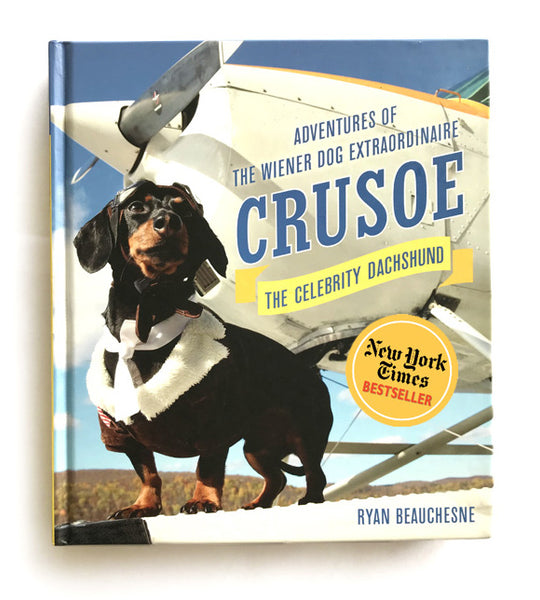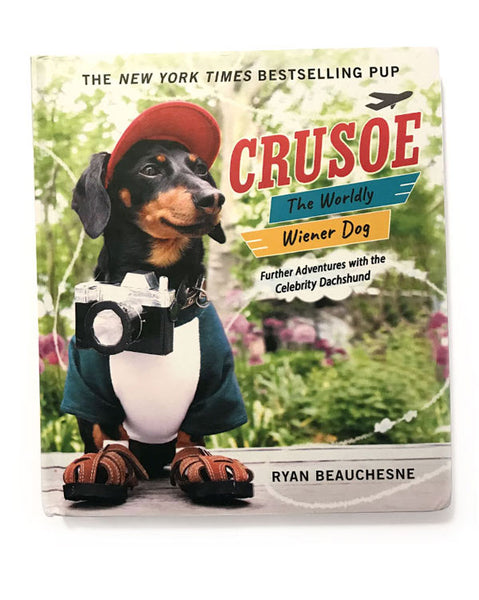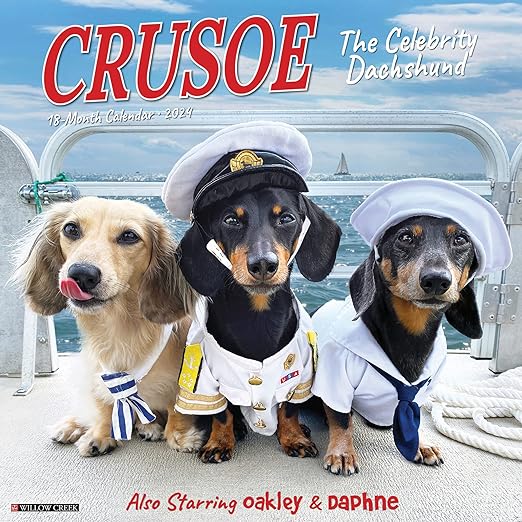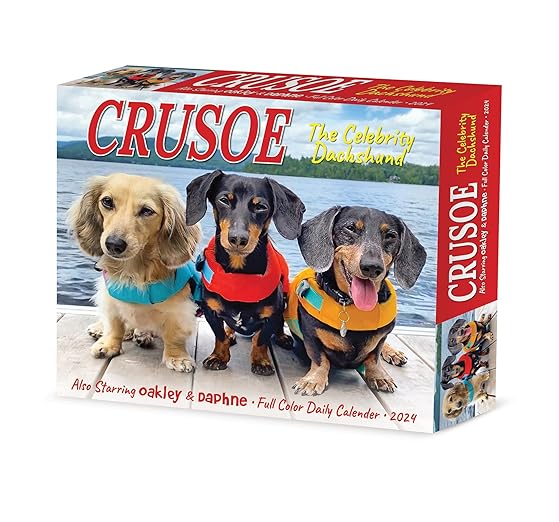This is Ryan writing here to explain about why Crusoe ended up going for surgery, as I know many of you are curious if not eager to find out.
I do apologize for the wait, it’s been a tiring week including traveling as you’ll see below. I believe we may have inadvertently made some of you worried about Crusoe’s long term health during all this, so I just want to start by saying Crusoe is and was never “sick”, and we don’t expect any future implications or illness as relating to this.
Before we tell you the backstory as to WHY this all happened, just want to give you a quick update. Crusoe is doing well. Since the surgery was done at the OVC Animal Hospital at the University of Guelph, we were actually staying at Oakley’s house for a few days pre and post-op since it’s so much closer for us. So Crusoe had the moral support of Oakley and Daphne, not to mention the tens of thousands of his incredible fans like you.

So, truly, a heartfelt thank you to all our fans for their thoughts, prayers, and well-wishes. It’s truly amazing how Crusoe can feel apart of so many families aside just our own.
 We want to give an absolutely incredible thank you to our surgeon, Dr. Singh. We’ve never felt more reassured, confident, and taken care of as we have under his care, pre-and-post operatively. Dr. Singh is also making incredible strides to advance minimally invasive surgical techniques into mainstream veterinary care. These techniques are already standard in human care, but not yet in animal care. So as a thank you to Dr. Singh and the college, we’ve set up a Crusoe Fund to help contribute to more clinical trials and research in advancing this for the benefit of all animals. We’ve already made a donation ourselves, and also invite you as Crusoe fans to lend your support as both a thank you for his care of Crusoe and to aid the advancement of this great initiative.
We want to give an absolutely incredible thank you to our surgeon, Dr. Singh. We’ve never felt more reassured, confident, and taken care of as we have under his care, pre-and-post operatively. Dr. Singh is also making incredible strides to advance minimally invasive surgical techniques into mainstream veterinary care. These techniques are already standard in human care, but not yet in animal care. So as a thank you to Dr. Singh and the college, we’ve set up a Crusoe Fund to help contribute to more clinical trials and research in advancing this for the benefit of all animals. We’ve already made a donation ourselves, and also invite you as Crusoe fans to lend your support as both a thank you for his care of Crusoe and to aid the advancement of this great initiative.
Anything you can offer is appreciated.
Why Crusoe Needed His Gallbladder Removed:
We first discovered there was something wrong with Crusoe’s gallbladder in late 2019 incidentally on an x-ray. It looked as if it were almost full of sand.
Our vet was immediately concerned and suggested we do a follow-up ultrasound to take a closer look, so we did. The ultrasound confirmed his gallbladder was largely full of mineralized sludge and some mucus. A healthy gallbladder (which is sort of a reserve sack of bile), should only contain bile of liquid consistency, and would normally appear as a mostly black circle on x-ray or ultrasound.
You can see the round gallbladder below. That whole circle should be just black.

We also did blood analysis to check his liver ezymes, which were all totally normal, fortunately. In fact, he was totally asymptomatic; absolutely nothing abnormal in his behavior or bloodwork. So we never would have suspected anything if it wasn’t for that incidental discovery…
However, what to do about it became a big question for us. With Crusoe absolutely meaning the world to us, and with so many people across the world who care dearly about him as well, we took it upon ourselves to consult the top experts we could find to consider all possible treatment routes and make the best decision possible.

So we did. We visited Dr. Sharon Center at Cornell University, who is a world renowned expert on canine liver disease. She made time in her enormously busy schedule to see Crusoe personally. Dr. Center’s colleague Dr. Mick was also invaluable in providing ongoing guidance and insights prior to and through surgery. We also consulted with Dr. Jody Gookin at NC State who has advanced a ton of research around gallbladder disease, and was kind enough to take provide her analysis of Crusoe’s case virtually. We also did continued tests with our local vet clinic and their internal medicine department (notable thank you’s to Dr. Cyrus, Dr. Bruce, and Dr. Gumley).
But I’ll keep it brief for the purpose of this post. It was pretty much the consensus of everyone we spoke to that his gallbladder would at some point become an issue, and at some point, likely have to be removed surgically. The only real question was “when”. It could stay stable for several years potentially. Or it could become suddenly very problematic in 6 months, or 1 month. There was no real answer.
So, deciding whether to do surgery now or “wait and see” was a tricky and very hard decision, but there were some important considerations that tipped the scale for us.
Why We Chose Surgery:
- Gallbladder issues, when they become symptomatic, put pressure on the liver which increases liver enzymes in the blood. The more stressed the liver is, the higher the risk of surgical complications (especially related to anesthesia), and thus a higher mortality rate.
- As gallbladders start to fill with sludge and mucus, they get clogged with the stagnant bile and can over-extend to the point of actually rupturing. If they rupture and bile spills into the surrounding area, it causes peritonitis which is extremely dangerous and fatal if surgery is not conducted immediately to clean it up – and even then, there is a very high mortality rate. Granted, a dog would probably not go from being asymptomatic to rupture overnight, but it can all still develop rather suddenly.
- A lot of studies have indicated mortality rates for gallbladder removal surgery (cholecystectomy) are MUCH lower while the dog is still asymptomatic.
- Dogs, like humans, can live fine without a gallbladder. It has no essential function is maybe the most fortunate part about all this.
So, our options were:
- Wait-and-see while trying to medically manage with a bile thinner medication like ursodiol for as long as possible. This may prolong/stall the development of his galbladder issue, but there is virtually no statistical data right now that show this can be reversed medically.
- Opt for surgery within next 6 months, which is also what the collective recommendation was from the experts we consulted with.
It’s incredibly hard to decide to do surgery on your dog when they’re asymptomatic and feeling fine, especially when you love them as much as we do. But if it’s a question of now or later, where later could mean riskier or emergency surgery, I think sometimes you have to take the more proactive decision.
Even if we delayed or waited until the first signs of symptoms to do surgery – where it would still be relatively safe – that could be 2 or 3 years from now, and Crusoe who is already almost 11, could be 13 or 14 by that point. As Crusoe also has a mild heart murmur at this point, we also don’t want to chance needing such a large surgery when he’s much older.
So ultimately, we decided the best thing for his long term health was to do surgery now while he’s asymptomatic and younger.
Going For Surgery
We actually had a date set for surgery back in mid-February. But then, COVID-19 hit and all the animal hospitals shut down except for true “emergencies”. Needless to say, the past few months of waiting to do surgery, have been stressful and draining…
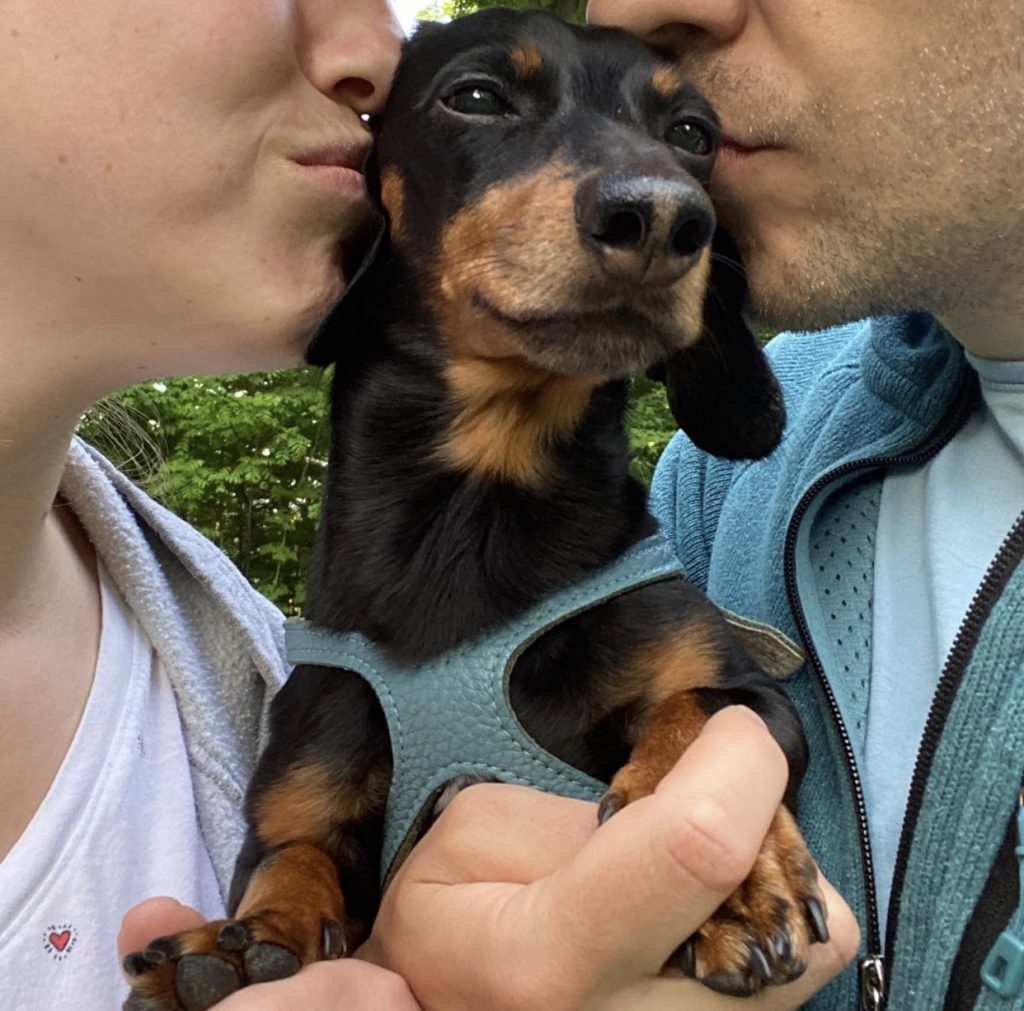
So we were both anxious and relieved when the time for surgery finally came. Of course, there’s always a voice in your head that’s questioning if you’re doing the right thing, and I would probably never forgive myself if anything happened to him, but at the end of the day, it was the best and safest thing for him.

As I mentioned, though, Dr. Singh and the OVC Companion Animal Hospital really helped us feel at ease. Dr. Singh came highly recommended to us from many of the sources we had found, so we were very confident in his abilities. But he also addressed every concern and question I had thoroughly and clearly (I had a lot of questions).
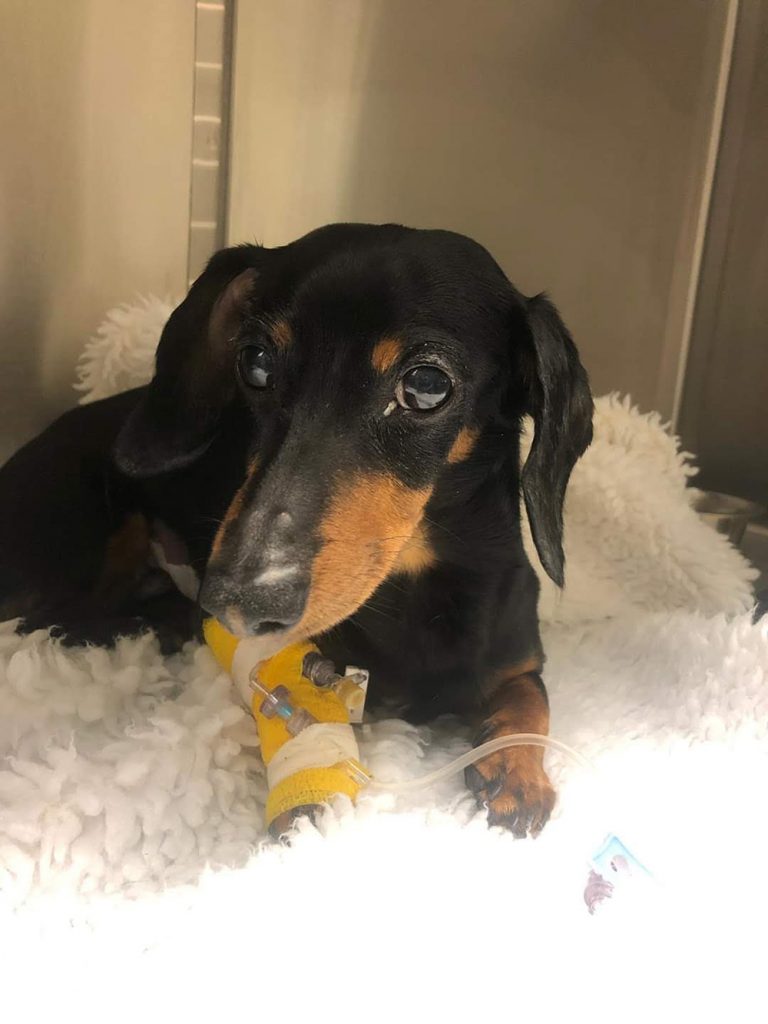
Fortunately the surgery went very well, and so far Crusoe is on a great recovery course, and we couldn’t be more thankful for that.
After all, 2020 hasn’t exactly been an encouraging year so far.

Crusoe means a lot to so many people out there, which is something incredibly special in itself. But for us, he is our whole world. He is both our beloved child, and my boss. Everything I do, everyday, revolves around him. There’s not a day that goes by where I don’t tell him that I love him.
Anyway…
We’ve since arrived back home from Oakley’s house, but I did get a few pics of the three of them together. I think they were all happy to see each other again.

It was a 5 hour drive back home from Oakley’s house. Luckily, Crusoe is a great traveler so had no issue.

Although, don’t think he’s thrilled that he’s the one with the blue donut, now…

A Takeaway
If there’s one takeaway we have for you, is next time you have a vet appointment scheduled, ask for an ultrasound just to check on things. It’s super easy; requires no sedation of anesthesia, doesn’t hurt at all, is not expensive – and is a great proactive way of just double checking that things are okay. It might even mean you catch something early that allows you to act on it before it becomes a more serious problem.
Thank you…
Thank you for being interested enough for reading all this. And thank you just for caring about our little guy. We truly appreciate it, and will continue to provide updates over the next couple weeks of his recovery.
And again, please consider helping out the Crusoe Fund for Dr. Singh and the OVC Animal Hospital at the University of Guelph to help advance minimally invasive surgery research so more animals can take advantage of its benefits. You can also/or make a donation to Cornell University for their own research as a thank you for providing valuable insights to Crusoe’s case.
As Crusoe would say,
Keep ballin’,
Ryan




